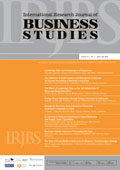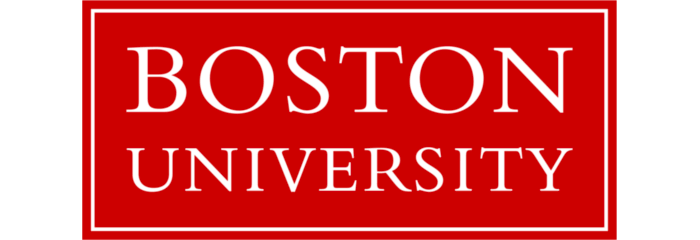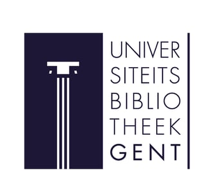Article Metrics |
|
|
A model of the configuration process of HR systems within multinational subsidiaries in Indonesia
Abstract
This article develops an empirical model of the process through which human resource management (henceforth HR) systems within subsidiaries of multinational companies (MNCs) are constructed. It extends current models that had previously been developed. It integrates empirical evidence and analyses that had been published earlier with unpublished materials from the same research project. The empirical research applied different qualitative methods in data collection, which are also described in this article. Complementing a previous conceptual model, this article adds on a micro-empirical model of the process and five propositions.
Keywords:
Configuration, Empirical Model, HR Systems; Indonesia, Institutional Theory
* Department of Management, Faculty of Economics and Business, Universitas Kristen Satya Wacana Jl. Diponegoro 52-60 Salatiga 50711, Indonesia
Full Text:
References
Arthur, J. B. (1994). Effects of human resource systems on manufacturing performance and turnover. Academy of Management Journal, 37(3), 670-687.
Arthur, J.B., & Boyles, T. (2007). Validating the human resource system structure: A levels-based strategic HRM approach. Human Resource Management Review, 17(1): 77-92.
Barney, J. B. (1991). Firm resources and sustained competitive advantage. Journal of Management, 17 (1), 99-120.
Becker, B., & Huselid, M. (1998). High performance work systems and firm performance: A synthesis of research and managerial implications. Research in Personnel and Human Resources Management, 16, 53-101.
Bjorkman, I., & Lu, Y. (2001). Institutionalization and bargaining power explanations in international joint ventures: The case of Chinese – western joint ventures. Organization Studies, 22(3), 491-512.
Bjorkman, I., & Xiucheng, F. (2002). Human resource management and the performance of western firms in China. International Journal of Human Resource Management, 13(6), 853-864.
Boxall, P. & Steeneveld, M. (1999). Human resource strategy and competitive advantage: A longitudinal study of engineering consultancies. Journal of Management Studies, 36(4), 443-464.
Burrel, G., & Morgan, G. (1979). Sociological paradigms and organizational analysis. London: Heinemann.
Chadwick, C., & Capelli, P. (1999). Alternative to generic strategy typologies in SHRM. Research in Personnel and Human Resource Management, Supplement 4, 1-29.
Charmaz, K. 2006. Constructing grounded theory: A practical guide through qualitative analysis. London: Sage.
Collis, J., & Hussey, R. (2009). Business research: A practical guide for undergraduate & postgraduate students. Hampshire: Palgrave Macmillan.
Dahlberg, K., Drew, N., & Nystrom, M. 2001. Reflective lifeworld research. Lund: Studentlitteratur.
Delery, J. E., & Doty, D. H. (1996). Modes of theorizing in strategic human resource management: Tests of universalistic, contingency, and configuration. Performance predictions. Academy of Management Journal, 39(4), 802-835.
Den Hartog, D.N., & Verburg, R.M. (2004). High performance work systems, organisational culture and firm effectiveness. Human Resource Management Journal, 14(1), 55-78.
Denzin, N.K., & Lincoln, Y.S. (2005). Introduction: The discipline and practice of qualitative research. In Denzin, N.K. and Lincoln, Y.S. The Sage handbook of qualitative research, pp. 1-32. London: Sage.
Edwards, P., & Wright, M. (2001). High-involvement work systems and performance outcomes: The strength of variable, contingent and context-bound relationships. International Journal of Human Resource Management, 12(4), 568-585.
Eisenhardt, K. M. (1989). Building theories from case study research. The Academy of Management Review, 14 (4), 532-550.
Elliott, J. (2005). Using narrative in social research: qualitative and quantitative approaches. London: Sage.
Erlandson, D.A., Harris, E.L., Skipper, B.L., & Allen, S.D. (1993). Doing naturalistic inquiry: A guide to methods. Newbury Park: Sage.
Farley, J. U., Hoenig, S., & Yang, J. Z. (2004). Key factors influencing HRM practices of overseas subsidiaries in China’s transition economy. International Journal of Human Resource Management, 15(4/5), 688-704.
Ferner, A. (1997). Country of origin effects and human resource management in multinational companies. Human Resource Management Journal, 7(1), 19-37.
Guthrie, J. P. (2001). High-involvement work practices, turnover, and productivity: Evidence from New Zealand. Academy of Management Journal, 44(1),180-90.
Huselid, M.A. (1995). The impact of human resource management practices on turnover, productivity, and corporate financial performance. Academy of Management Journal, 38, 635-672.
Jiang, K., Lepak, D. P., Han, K., Hong, Y., Kim, A., & Winkler, A. L. (2012). Clarifying the construct of human resource systems: Relating human resource management to employee performance. Human resource management review, 22(2), 73-85.
Jovchelovitch, S. & Bauer, M. W. (2000). Narrative interviewing [online]. London: LSE Research Online. Available at http://eprints.lse.ac.uk/2633.
Kepes, S., & Delery, J. (2007). HRM systems and the problem of internal fit. In P. Boxall, J. Purcell & P. Wright (Eds.). The Oxford handbook of human resource management, pp. 385-404. Oxford: Oxford University Press.
Khatri, N. (2000). Managing Human Resources for Competitive Advantage: A Study of Companies in Singapore. International Journal of Human Resource Management, 11, 336-366.
Lewin, D. (2001). Low involvement work practices and business performance. Proceedings of the 53rd Annual Meeting of Industrial Relations Research Association, 275-292. New Orleans, LA. Downloaded on 1 December 2011 from http://www.anderson.ucla.edu/documents/ areas/fac/hrob/low-involvement.pdf,
Lewin, D. (2002). HRM and business performance research: Empiricism in search of theory. Paper presented to the 62nd Academy of Management meeting, Denver, CO., 32 pp.
Li, J. (2003). Strategic Human Resource Management and MNE’s Performance in China. International Journal of Human Resource Management, 14, 157-173.
Mabry, L. (2009). Case study in social research. In P. Alasuutari, L. Bickman, & J. Brannen. The Sage handbook of social research methods, pp. 214-227. London: Sage.
MacDuffie, J.P. (1995). Human resource bundles and manufacturing performance: Organizational logic and flexible production systems in the world of auto industry. Industrial & Labor Relations Review, 48(2), 197-221.
Monks, K., Kelly, G., Conway, E., Flood, P., Truss, K., & Hannon, E. (2013). Understanding how HR systems work: the role of HR philosophy and HR processes. Human Resource Management Journal, 23(4), 379-395.
Napier, N.K., & Vu, V.T. (1998). International human resource management in developing and transitional economy countries: A breed apart? Human Resource Management Review, 8(1), 39-77.
Ozbilgin, M.F. (2009). From journal ranking to making sense of the world. Academy of Management Learning and Education, 8(1), 113-121.
Paauwe, J. (2004). HRM and performance: Achieving long-term viability. Oxford: Oxford University Press.
Paul, A.K., & Anantharaman, R. N. (2003). Impact of people management practices on organizational performance: Analysis of a causal model. International Journal of Human Resource Management, 14, 1246-1266.
Pil, F.K., & MacDuffie, J.P. (1996). The adoption of high involvement work practices. Industrial Relations, 35(3), 423-455.
Rupidara, N. S. (2018). Connectivity of Actors and Diffusion of Ideas in HR Systems Configuration Process in Multinational Subsidiaries in Indonesia. International Research Journal of Business Studies, 11(3), 159-177.
Rupidara, N. S., & Darby, R. (2017). Institutional influences on HRM in the Asian business environment: the case of Indonesia. Journal of Asia Business Studies, 11(3), 262-277.
Rupidara, N. S., & McGraw, P. (2011). The role of actors in configuring HR systems within multinational subsidiaries. Human Resource Management Review, 21 (3), 174-185.
Schwandt, T.A. (1994). Constructivist, interpretivist approach to human inquiry. In N.K. Denzin & Y.S. Lincoln. Handbook of qualitative research, pp. 118-137. Thousands Oaks, CA: Sage.
Stake, R.E. (1994). Case studies. In N.K. Denzin & Y.S. Lincoln. Handbook of qualitative research, pp. 236-247. Thousands Oaks, CA: Sage.
Stark, S., & Torrance, H. (2008). Case study. In B. Somekh & C. Lewin. Research methods in the social sciences, pp. 33-40. London: Sage.
Wright, P. M., McMahan, G. C., & McWilliams, A. (1994). Human Resources and sustained competitive advantage: A resource-based perspective. International Journal of Human Resource Management, 5(2), 301-326.
Yin, R.K. (1989). Case study research: Design and methods. Newbury Park, CA: Sage.
Copyright (c) 2019 INTERNATIONAL RESEARCH JOURNAL OF BUSINESS STUDIES
International Research Journal of Business Studies has been covered by the following services: | ||||||||||||||||||||||||
|




















